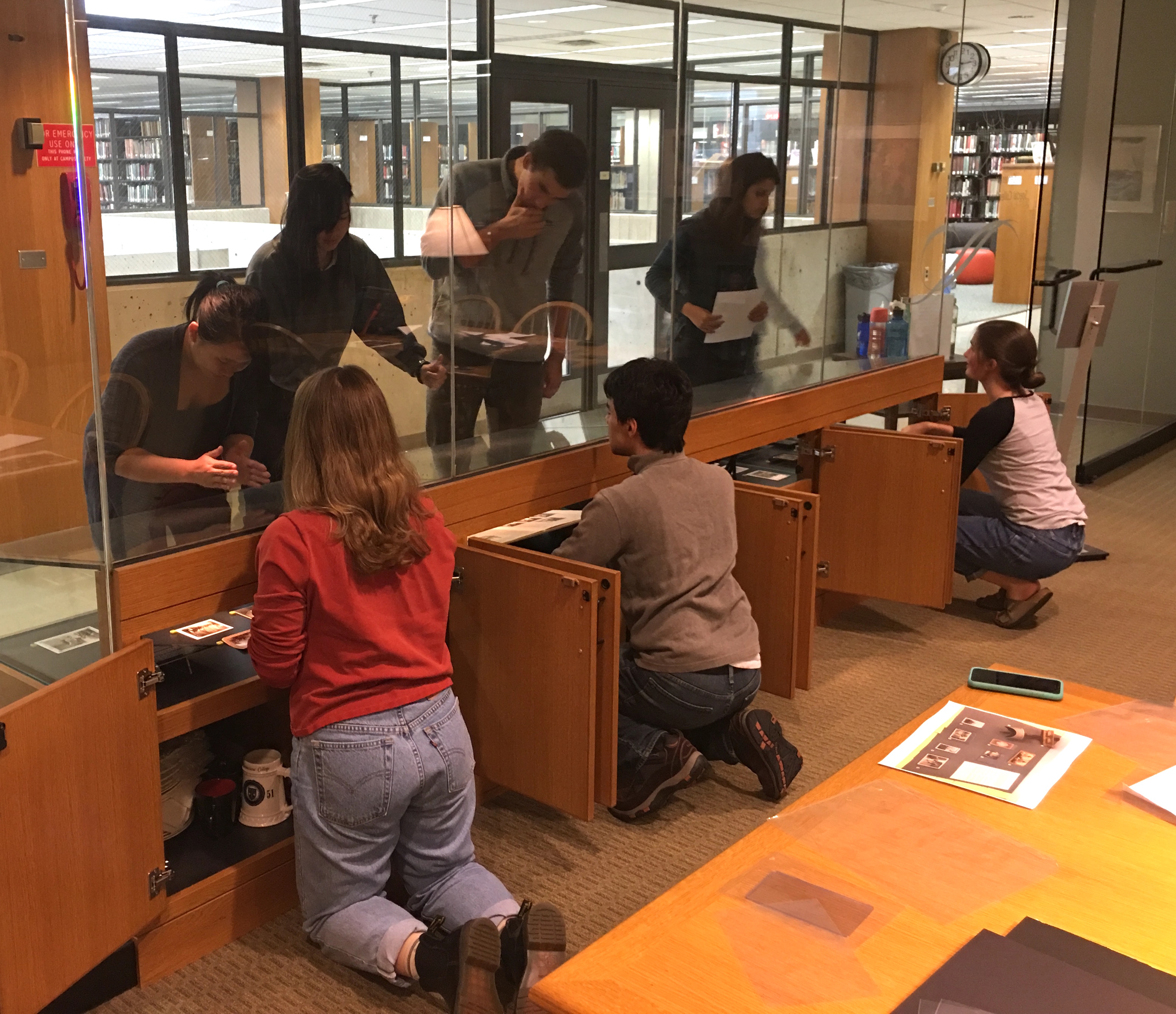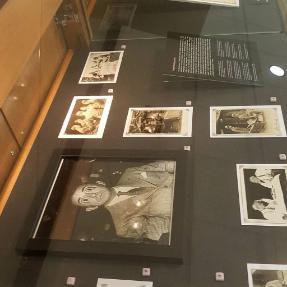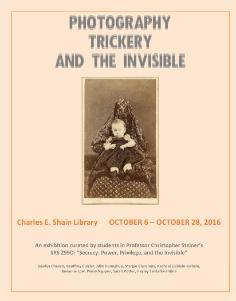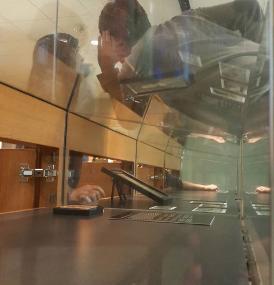
This semester, I’m taking a Sophomore Research Seminar called “Secrecy: Power Privilege and the Invisible,” taught by Lucy C. McDannel ‘22, Professor of Art History and Anthropology and Director of Museum Studies Christopher Steiner. The Sophomore Research Seminars are a set of classes at Conn designed to let students get a head start at doing in-depth research by giving us demanding inquisitive assignments and culminating in a 15-page original research paper.
My seminar is an interesting interdisciplinary look into the many different topics and perceptions surrounding secrecy; some topics we’ve covered include secret societies, magic, and surveillance. Recently, we had the exciting opportunity to curate a small exhibit in the display cases outside the Linda Lear Center for Special Collections and Archives titled “Photography, Trickery, and the Invisible.” The exhibit focused on three types of photographs common in the late 19th and early 20th centuries: hidden mother, spirit, and trick photography. Most of us had never curated an exhibit before, so it was a new and fun experience for the class.
To prepare for the exhibit we had three class sessions where we read and discussed articles about the different types of photographs. Finally, during the last class before Fall Break, we selected and arranged photographs for the exhibit and wrote short descriptions of each type. I worked with the trick photography group. We had the largest selection of photographs, which made it difficult to agree on what specific photographs merited inclusion. What I like most about trick photography is that most people have probably seen and made trick photographs. They’re photographs that joke around by showing something that’s physically impossible, such as a man playing cards with reflections of himself.
Although I chose to work on trick photography, the other categories are also very interesting. Spirit photography is derived from trick photography, and allegedly reveals blurry images of deceased relatives that accompany the subject, which in reality were added in by the photographer. Hidden mother photography came because young children usually could not stay still long enough for photographers to make good portraits of them. It was a way of creating portraits of children by having a parent, usually the mother, hidden by a piece of cloth hold the child while the picture was taken. While these human figures may have seemed invisible at the time, they are very obvious to us today.
I’ve done several other fun but difficult essays and projects for the class, such as the comparison that I blogged about earlier this semester of past and present political scandals reported by The New York Times. The seminar has been and continues to be a challenge for me, but with each of its (many) major deadlines I discover something new and important that ultimately shapes my view of the world.


